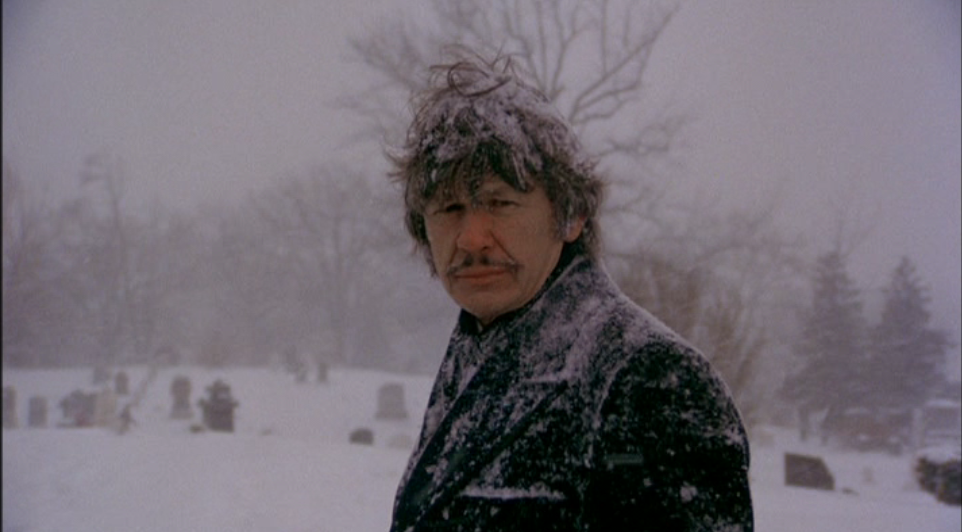Movie Review: Death Wish (1974) directed by Michael Winner
Paul Kersey (Charles Bronson) has a pretty good life. He’s a respected architect at a large firm, he’s married to a beautiful woman (Hope Lange), has a pretty daughter (Kathleen Tolan) and a respectful son-in-law (Steven Keats). Kersey is well-off enough to afford a winter vacation in Hawaii. But this is the early 1970s, and he must return to crime-ridden cesspool New York City. When hoodlums invade Kersey’s apartment, kill his wife and rape his daughter, the police can do very little. If only there was some way to fight back! It’s as though society has developed a death wish.

This 1974 crime thriller, based on a novel of the same name by Brian Garfield, is one of Charles Bronson’s best known roles. As he goes from conscientious objector to killer vigilante, we follow the journey step by step. We learn that he grew up with guns, but abandoned them at his mother’s behest after his father died in a hunting “accident.” His co-worker calls him a “bleeding heart liberal” for acknowledging that street crime is often motivated by poverty, but since that co-worker’s solutions to the crime problem involve concentration camps and a police state, the co-worker may be a biased source. (Their more traditionally conservative boss objects to a police state on the ground that it would mean higher taxes.)
With his wife dead and daughter near catatonic from her trauma, Kersey has much manpain. In a time before ubiquitous security cameras and DNA testing, the police inform Kersey there’s little chance that they will be able to find the culprits–for this particular crime, anyhow. Kersey’s boss gives him an assignment out in Tucson, Arizona to give him a break. There Kersey meets affable land developer Aimes Jainchill (Stuart Margolin), who reintroduces Kersey to the joys of shooting, and the concept of bringing justice from the smoking barrel of a gun. Jainchill even packs a revolver for Kersey as a gift to get around New York City’s strict handgun laws.
Despite an initial poor reaction to his first mugger kill, Kersey soon learns to enjoy it, and rises to fame as the anonymous “vigilante” fighting back against crime. It’s at this point that NYC police detective Frank Ochoa (Vincent Gardenia) comes in, as the lead investigator of the vigilante killings.
Good: Paul Kersey is not superhuman; he makes mistakes and gets wounded by muggers who manage to outflank him. His method involves wandering about looking vulnerable until he attracts or finds muggers to ambush, and it’s suggested that sometimes he has to do this for hours before getting lucky.
The movie doesn’t go with racial stereotypes–there’s both white and black criminals (“Freak #1” is likely ethnically Jewish, as he’s played by Jeff Goldblum rocking a crown hat that was considered stylish by lower-income teens in the 1940s), white and black cops, and white and black ordinary citizens. The movie notes that Kersey statistically kills more black than white muggers, but this is implied to be luck of the draw.
There’s no cheap catharsis where Kersey tracks down and kills his family’s attackers. The “freaks” might be pulled in for something else later, but for this, they get away.
Less Good: Kersey’s wife and daughter are in the story to be attacked so that he has reason to seek revenge. The daughter has no coherent dialogue after the attack, and barely exists as a character before that.
The movie implies that vigilantism works, with New York City’s crime rate falling as criminals become afraid of newly empowered citizens. (This is a change from the book, where one of the points is that vigilante tactics do not improve things.)
Topical: The police are depicted as well-meaning but overwhelmed. It’s not that they can’t catch criminals (most of Kersey’s victims have arrest and/or conviction records), but there’s so much crime that they can’t keep up, and the chance of catching the perpetrator of any given random crime is low. They’re better at tracking down Kersey, as he has a distinctive M.O., uses the same gun for each killing, and leaves clues that can be investigated. Ochoa does an illegal search of Kersey’s apartment, but by that time he’s been instructed to not so much arrest the vigilante as make him “disappear.” Ochoa draws the line at killing Kersey, but is willing to convince the vigilante to leave town.
There’s also discussion of what medical insurance will and won’t pay for. There’s an upper limit on what they’ll pay for hospitalization.
Content note: Violence, a bit of gore. Rape, partial nudity. A fair amount of R-rated rough language. Kersey vomits just off camera.
Overall: A suspenseful crime drama that’s fairly realistic in its violence, and has a strong performance by Charles Bronson. Well worth watching, but skip the sequels.

